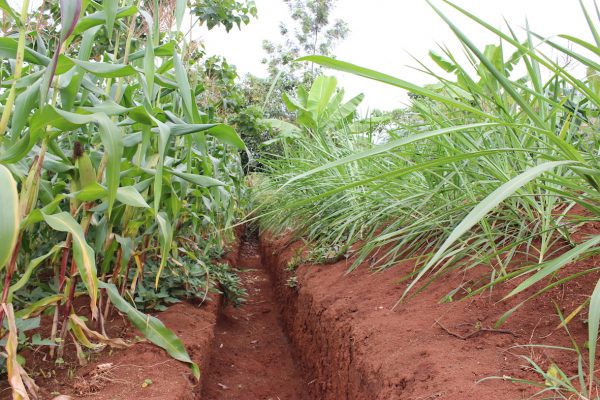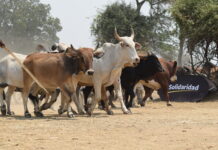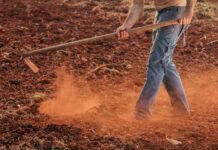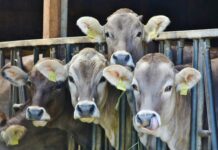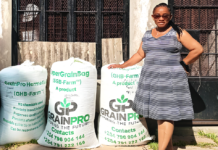Half of the topsoil on the planet has been lost in the last 150 years. In addition to erosion, soil quality is affected by other aspects of agriculture. These impacts include compaction, loss of soil structure, nutrient degradation, and soil salinity. These are very real and at times severe issues.
The effects of soil erosion go beyond the loss of fertile land. It has led to increased pollution and sedimentation in streams and rivers, clogging these waterways and causing declines in fish and other species. And degraded lands are also often less able to hold onto water, which can worsen flooding. Sustainable land use can help to reduce the impacts of agriculture and livestock, preventing soil degradation and erosion and the loss of valuable land to desertification.
Soil erosion is also a silent threat to our life on this planet, or at least our food supply. For it is not an immediate threat, and may not have as sudden and irreversible effects as climate change for example, it does not make the top news nor is it a common topic around dinner tables – nevertheless, it is sneaking up on us.
Soil erosion is a process in which soil quality and fertility diminishes, and the nutrient levels vital for food crop production are gradually depleted. Such degradation will eventually result in declining crop yield. Coupled with an increasing world population such decline in agricultural productivity may result in serious problems for our food supply. Therefore, it is now perhaps more important than ever to adopt conservation tillage practices to preserve soil quality and agricultural productivity.
Intensive production
Soil erosion happens from water, wind or over tilling in agricultural cultivation. For example in Europe, where intensive agricultural production is still largely the norm, farmers often cultivate their fields in multiple passes (stubble conditioning, plowing, and seedbed preparation) between harvesting a field and planting new crop.
The result is very appealing to the eye: enormous fields look like the best managed home gardens with their surface raked to perfection. However, the excessive soil disturbance in this mode of cultivation results in significant loss of fertile matter and moisture. Moreover, since the topsoil lies unprotected it is also exposed to rain and wind induced erosion. The ongoing climate change and the resulting extreme weather conditions have recently worked to exacerbate the situation resulting in the acceleration of the loss of topsoil. Therefore, agricultural producers worldwide must adopt conservation tillage practices to battle soil erosion to preserve topsoil and maintain or increase output levels.
Mulch tillage
Conservation tillage is a set of methods for soil cultivation that are designed to preserve and improve the topsoil. One form of conservation tillage is mulch tillage, which is also a kind of minimum tillage; as such, it provides a cost efficient alternative for modern high-yield agricultural production while ensuring that soil is properly managed to maximize long-term productivity.
Mulch tillage uses the large amount of plant residue left on the fields after harvesting to protect the soil from in adverse conditions and to maintain its nutrient levels. The key implement in this mode of cultivation is the mulch cultivator, which is used after harvesting to manage the stubble and create a seedbed most often in a single pass. The cultivator efficiently cuts the residue left on the fields and incorporates part of it into the soil, while leaving the remainder on top creating the so called mulch layer. The residue incorporated decomposes over time, thus increasing the concentration of organic matter and nutrients directly in the root zone. Such recycling of material minimizes the need for fertilizers and the application of chemicals aimed at soil improvement. The residue incorporated also increases the water absorption and retention capability of the soil, mitigating the effects of adverse climate conditions. The mulch layer created on top of the soil works to enhance this effect as it is essentially a protective layer in heavy winds and rain, and it also prevents overheating a drying out of the soil on hot weather conditions.
Cheap and easy
As in most cases of change, the adoption of mulch tillage and conservation tillage practices is not an easy or inexpensive transition. By virtue of incorporating several tillage functions the implements for these cultivation methods are often large machines requiring considerable tractor power. Therefore, the transition may require considerable and carefully planned investment. Luckily, as a form of minimum tillage, mulch tillage offers operational savings in man-hours as well as fuel costs, which in the long term more than offset the initial costs of shifting to this method of cultivation.
To conclude, with current trends of hectic weather conditions, climate change, rising energy costs and an ever-growing demand for food, it is clear that the future of agriculture lays in conservation cultivation methods that offer high-yields at the least costs in the long-run. The health of soil is a primary concern to farmers and the global community whose livelihoods depend on well managed agriculture that starts with the dirt beneath our feet. While there are many challenges to maintaining healthy soil, there are also solutions.


